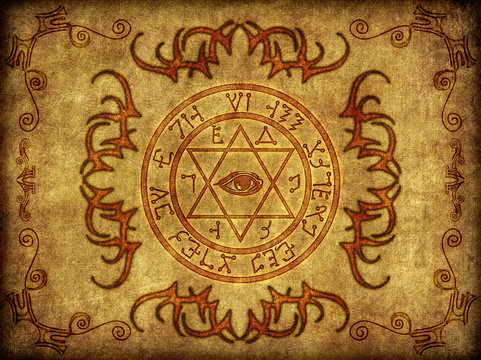Kaballah Magic
Kabbalah (also spelled Kabalah, Cabala, Qabala)—sometimes translated as “mysticism” or “occult knowledge—is a part of Jewish tradition that deals with the essence of God. Whether it entails a sacred text, an experience, or the way things work, Kabbalists believe that God moves in mysterious ways.
However, Kabbalists also believe that true knowledge and understanding of that inner, mysterious process is obtainable, and through that knowledge, the greatest intimacy with God can be attained.

Exploring Jewish Mysticism's Three Dimensions
There are three dimensions to almost all forms of Jewish mysticism, which are likely to be understood by only small numbers of people who possess specialized knowledge or interest in the topic:
1
The Investigative
The investigative aspect of Kabbalah involves searching the hidden reality of the universe for secret knowledge about its origins and its organization—a quest that is more esoteric than mystical. In Jewish tradition, there are three ways esoteric knowledge can be obtained:
- By interpreting sacred texts to uncover nistar (“hidden” meaning)
- By oral transmission of tradition from a Kabbalistic master
- By direct revelation, which might include visitation by an angel or Elijah, spirit possession, or other supra-rational experience
Although it is primarily interested in metaphysics, things “beyond” the physical universe, investigative Kabbalah is not anti-rational. All Jewish mystical/esoteric traditions adopt the language of, and expand upon, the philosophic and even scientific ideas of their time.
2
The Experiential
The experiential dimension of Kabbalah involves the actual quest for mystical experience: a direct, intuitive, unmediated encounter with a close but concealed Deity. Nonetheless, Judaism keeps its mystics grounded, and they are expected to marry, raise a family, and fulfill all customary communal religious obligations.
3
The Practical
The practical dimension of Kabbalah involves rituals for gaining and exercising power to effect change in our world and in the celestial worlds beyond ours. This power is generated by performing commandments, summoning and controlling angelic and demonic forces, and otherwise tapping into the supernatural energies present in Creation.
The practical aspect of Kabbalah furthers God’s intention in the world, advancing good, subduing evil, healing, and mending. The true master of this art fulfills the human potential to be a co-creator with God.
The Zohar
The Zohar, a collection of written, mystical commentaries on the Torah, is considered to be the underpinning of Kabbalah. Written in medieval Aramaic and medieval Hebrew, the Zohar is intended to guide Kabbalists in their spiritual journey, helping them attain the greater levels of connectedness with God that they desire.
Divine Continuum
Kabbalistic thought often is considered Jewish mysticism. Its practitioners tend to view the Creator and the Creation as a continuum, rather than as discrete entities, and they desire to experience intimacy with God. This desire is especially intense because of the powerful mystical sense of kinship that Kabbalists believe exists between God and humanity. Within the soul of every individual is a hidden part of God that is waiting to be revealed. Even mystics who refuse to describe such a fusion of God and man so boldly, still find the whole of Creation suffused in divinity, breaking down distinctions between God and the universe. Thus, the Kabbalist Moses Cordovero writes, “The essence of divinity is found in every single thing, nothing but It exists….It exists in each existent.”

